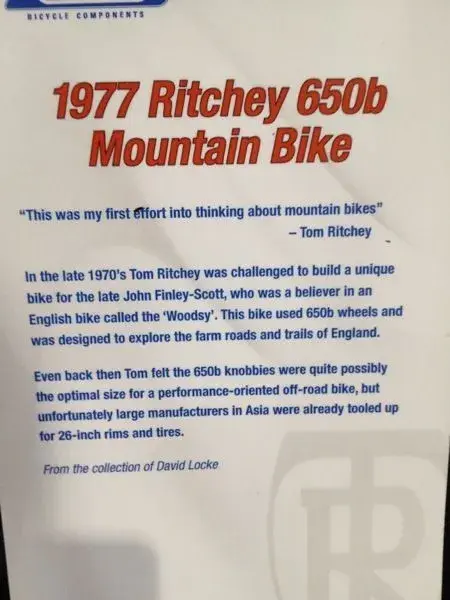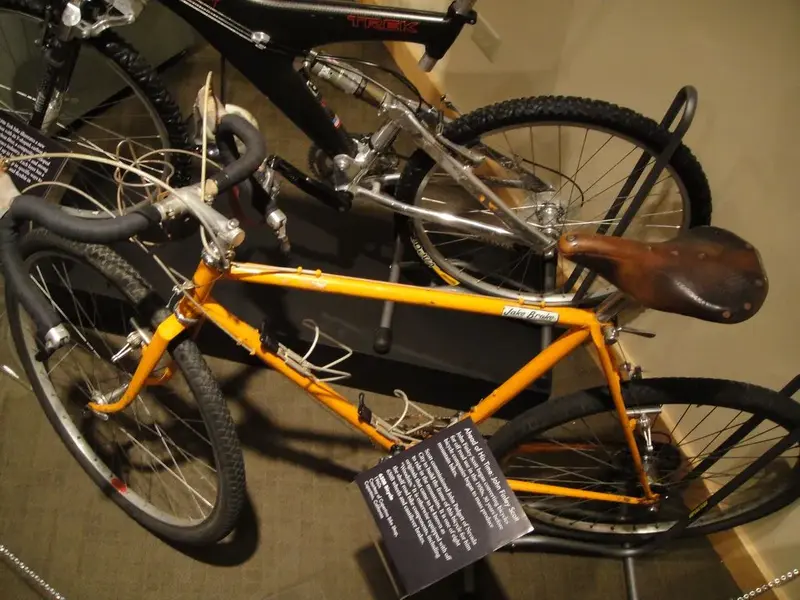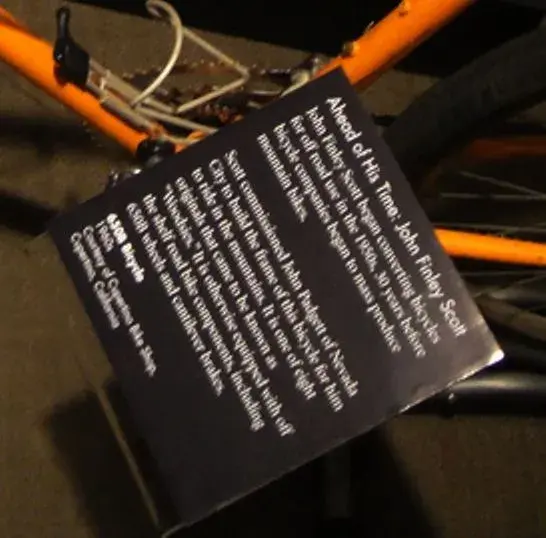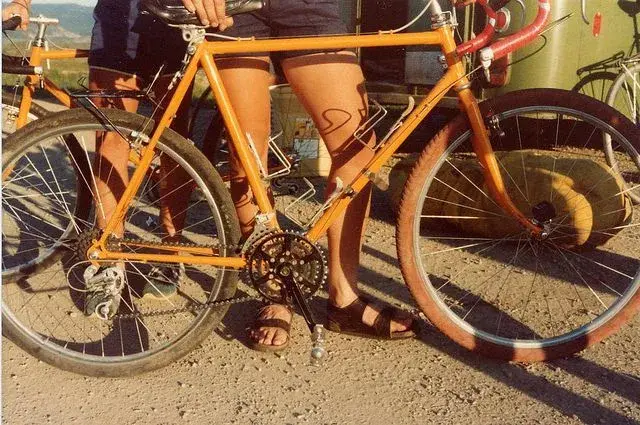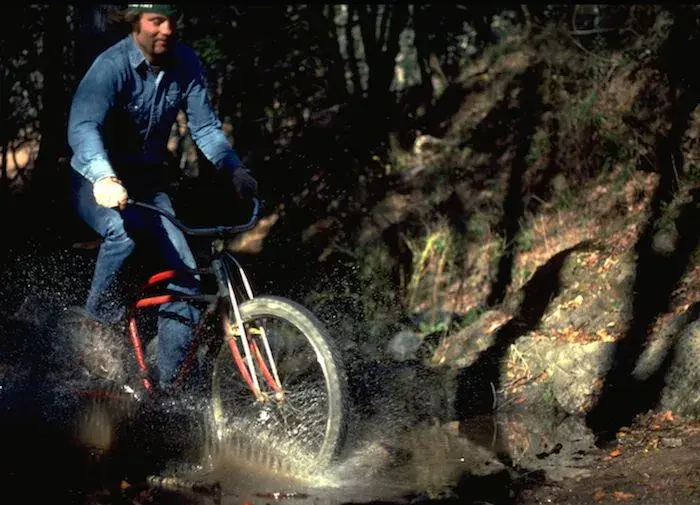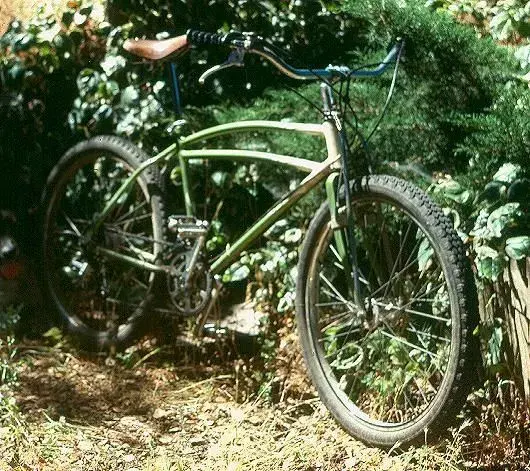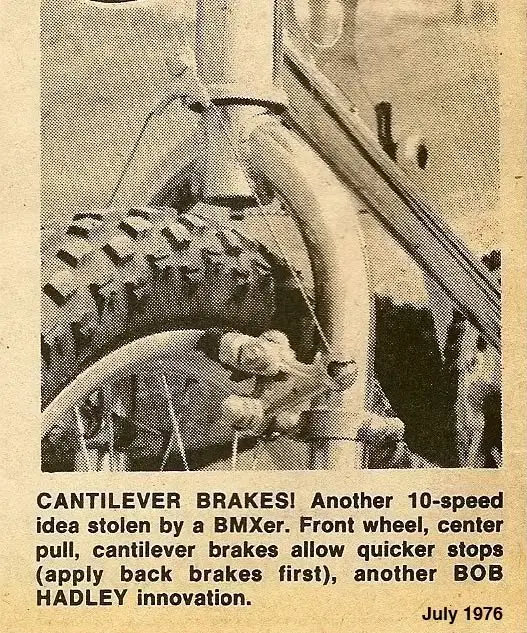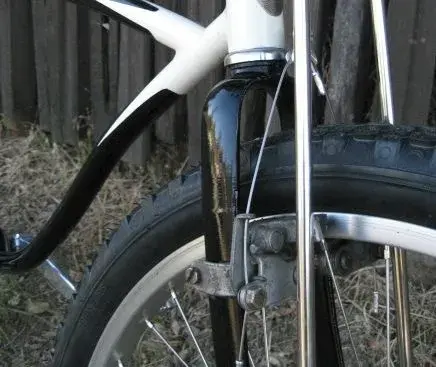Re:
In the subject of canti brakes:
For instance: The earliest use of cantilever brakes on mountain [bikes?] that I know of is when Joe Breeze used them on Breezer No1 in October 1977. Is this correct, or does anyone here know of examples of them being used on earlier Klunker bikes?
Looking through
Wendy Cragge's photo archive, it would appear that
Otis Guy's 1944 Red Excelsior, ridden by Joe Breeze ran clamp-on cantis on the front on Repack #4 1976:
Could be 1976 or '77, but
Alan Bonds appears to have been running a similar set-up on his metallic green Excelsior around the same time.
Unclear if these were custom made, adapted, or the
original 50s pressed steel fittings from an Excelsior which just came with the frames, rather than being specifically chosen for Repack duties.:
I suppose my question would be (probably to Charlie K, if he's still talking to us after that Purple tirade

) would be:
-What prompted the decision to go with cantis all round rather than drums/coasters on those first Breezers, when you were still running on chromed steel rims with stumpy Dia-Compe brakes?
My wild speculation:
-Joe B and Charlie K could see the way the wind was blowing...At the time, braking was pretty poor with either drums or cantis, so there was no great advantage in one arrangement over another. The original series1 Breezer rims (according to
Joe B via Dr. S 05-08-12) were still the steel Araya 26 x 1.75 and the Schwinns ran S-2 chromed rims. A little while later, with boxy aluminium Araya 7X and UKAI cruiser rims and longer Mafac cantis readily available, the decision would have been much clearer. Fairfax Pat posted
this on MTBR Apr 2012: "The rims were upgraded [on Breezer #3] to alloy rims when they came available in '79 as were all the other bikes because they worked better."
-Joe B or Otis G could probably have brazed canti fittings all round and fitted DC 983s onto their Excelsior frames, but the Excelsior forks have such a flat cross section that I suspect they were better suited to the fore/aft loadings of a drum brake than the lateral twist from a decent canti. Also the Schwinn seatstays, with their dropped 16" c-to-c seat cluster, were too low to get heel clearance. Hence the round or oval section blades on the Breezer forks and the higher, 22" c-to-c, past horizontal, top tube and seat cluster, which also allowed a shorter seatpost. Building a whole new frame allowed these failings of the vintage Schwinn frame (and a whole load more, no doubt) to be addressed.
As a small sideline...first off-road specific cantilevers?
Not mountainbike, but I did dig up
this scan attributed to 1976 of an experimental Dia-Compe 983 canti set-up on custom mounts by Bob Hadley (BMX Plus/Hadley components/GT/Norba vice pres...) when he was racing:
The arrangement and fork wouldn't be out of place on a standard mountainbike 10 years later...I think this emphasises the contribution made in the following years by the BMX legacy of Redline/GT/Haro/Cooks/Bullseye etc.
All the best,
